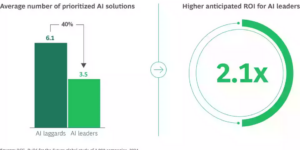Commercial lines insurers are intent on maintaining underwriting discipline as they grow, using data, AI, predictive analytics and business rules to align pricing actions with risk quality and make better underwriting decisions. They are using AI and analytics to improve claims outcomes, augment customer satisfaction, and optimize risk selection and pricing, says Novarica in a new report.
Claims: Insurers are using predictive analytics to identify claims that would benefit from earlier intervention to detect fraud and take advantage of new data sources. Newer loss control solutions leverage AI, analytics and new data sources. Other capabilities include identification of claims for low- or no-touch processing, machine vision estimation for low-complexity claims, and identification of claims that may lead to litigation for proactive intervention.
Underwriting: Many insurers are applying predictive models to the underwriting process through the application of business rules and incorporation of models via APIs. Some are also using AI to develop more complete pictures of risks and to normalize data and surface risk indicators that would not otherwise be obvious.
Customer engagement: Digital customer engagement capabilities include online self-service, mobile/SMS functionality, and natural language processing technology pilots to improve agent and policyholder support. Commercial insurers use data and analytics to model behavior, including identification of prospects and cross- and up-sell potential for existing clients. More commercial insurers are beginning to compile 360-degree views of their accounts and using CRM solutions to capture engagement, service calls, loss control training, cross-selling campaign activity and general interactions.
Source: Novarica report, “Business and Technology Trends: Commercial Lines”





















 Allstate: How Can You Save on Auto Insurance?
Allstate: How Can You Save on Auto Insurance?  Today’s Commercial Property Market in ‘Better Place’: Brokers
Today’s Commercial Property Market in ‘Better Place’: Brokers  California Wildfires Had Little Impact on Reinsurers’ Risk Appetite During April Renewals
California Wildfires Had Little Impact on Reinsurers’ Risk Appetite During April Renewals  AM Best: Tariff Uncertainty Could Lead to Credit Rating Changes for Insurers
AM Best: Tariff Uncertainty Could Lead to Credit Rating Changes for Insurers 






